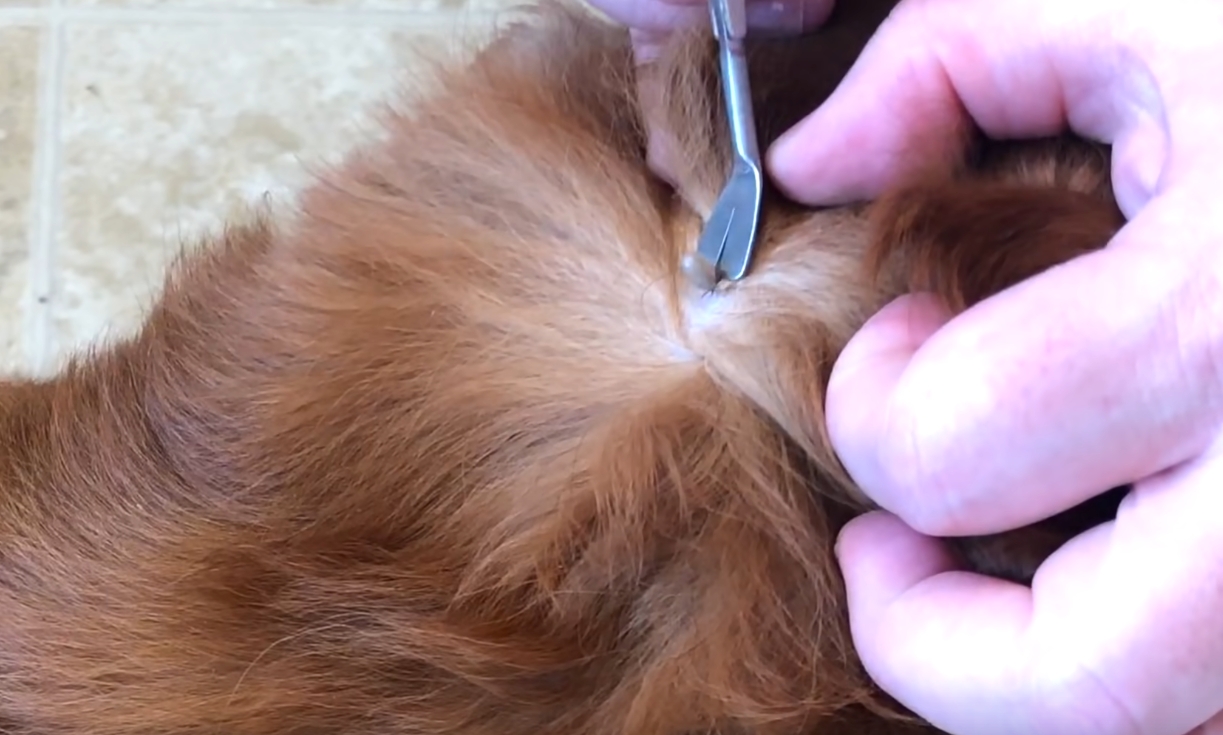Hiking, camping, and going to the dog park are all activities that can put your pet at risk of a tick bite. Ticks carry a wide variety of diseases, including Lyme disease, deadly for dogs. But how do you know if a tick has bitten your pet?
| Time Frame | Description |
|---|---|
| Initial attachment | Ticks typically attach to a dog within 24-48 hours of contact. |
| Feeding period | Ticks will remain attached to the dog while they feed, which can take anywhere from 3-7 days. |
| Detachment | Once the tick has finished feeding, it will detach from the dog and fall off. This can take anywhere from 1-2 days. |
| Total attachment time | On average, a tick will stay attached to a dog for approximately 5-10 days. |
How Long Does A Tick Have To Be Attached To A Dog To Transmit Disease?
Contents
A tick will transmit disease if it has been attached for more than 24 hours.
The longer a tick is attached, the greater the chance of infection. A dog can be infested with ticks and not show any symptoms or signs of illness at all but still become infected. The only way to know if your dog has an infection is by doing a blood test after removing the ticks. If left on for too long, some types of Lyme disease will start attacking different parts of the body and cause serious health problems such as inflammation in joints or heart infections that can be fatal without treatment.
If you suspect your dog has ticks:
- Check their coat carefully for live ticks and eggs (black, tan, or red). Also, check folds of skin and under the tail.
- Remove any ticks you find with a tick removal tool or fine-tipped tweezers, grasping the tick as close to the dog’s skin as possible and pulling straight out.
- Please dispose of the tick by placing it in alcohol, sealing it in a baggie, or flushing it down the toilet.
- If your dog has been diagnosed with Lyme disease:
- There are many excellent treatments for Lyme disease, including oral antibiotics (doxycycline is most common) and intravenous antibiotics given in a hospital setting. Treatment typically lasts from two to four weeks. A medicine may need to be extended up to six months in severe cases.
- Prevention is always better than cure, so make sure you protect your pet against ticks all year round. Some products on the market include tick collars, spot-on treatments, and shampoos. Talk to your veterinarian about the best way to protect your pet.
How Long Does It Take For A Tick To Fall Off A Dog?
It is vital to remove ticks from dogs as soon as possible to transmit many diseases. How long it takes for a tick to fall off a dog depends on some factors, including the size of the tick and the location on the body where it is attached. Generally speaking, more minor ticks will detach more quickly than larger ones. Ticks stuck close to the head or neck are likely to come off sooner than those located further down the body.
What does a tick look like on a dog?

A tick is a tiny, brown, parasitic arachnid that feeds on the blood of its host. Ticks are most commonly found in wooded or grassy areas, and they attach themselves to animals as they pass by. Ticks can carry many diseases, so removing them as soon as possible is essential.
Here are some tips:
- Look for a tiny, brown, parasitic arachnid.
- Check-in wooded or grassy areas.
- Ticks attach themselves to animals as they pass by.
- Ticks can carry several diseases.
- Remove them as soon as possible.
Once the tick is removed, clean the wound with soap and water. Monitor the area for signs of infection, such as redness, swelling, or discharge. If you notice anything out of the ordinary, make an appointment with your veterinarian for a checkup.
How do I know if my dog has ticks?
They can be found in many parts of the world and thrive in warm environments. Ticks attach themselves to their hosts by embedding their mouthparts into the skin. They tend to prefer areas around the head, neck, and ears but can connect anywhere on the body.
Tick removal tool

Removal tools:
- Tweezers
- Nail clippers
- Bottle opener
- Paper clip
- Safety pin
- Toothpick
If you’re having difficulty removing the tick, try one of these removal tools. But if it’s embedded in the skin, don’t try to remove it yourself – see your veterinarian. They’ll have the tools and experience to do it safely. And remember, ticks can carry diseases, so be careful when handling them! How long does a tick stay on a dog? That depends on the type of tick and the dog’s environment.
How do I safely remove a tick from my dog?
If you find a tick on your dog, it is vital to remove it as soon as possible. Ticks can carry many diseases, so it’s essential to take precautions when removing them.
Here are some tips for safely removing a tick from your dog:
- Use a tick removal tool or fine-tipped tweezers to grasp the tick as close to the skin as possible and pull straight out.
- Please dispose of the tick by placing it in alcohol, sealing it in a baggie, or flushing it down the toilet.
- If your dog has been diagnosed with Lyme disease, many excellent treatments are available. Prevention is always better than cure, so make sure you protect your pet against ticks all year round. Some products on the market include tick collars, spot-on treatments, and shampoos. Talk to your veterinarian about the best way to protect your pet.
What are the side effects and diseases a dog can get from a tick?
Dogs are susceptible to various diseases and parasites that can be transmitted through ticks. Some of these diseases can be deadly, while others can cause long-term health problems. It is essential to remove any ticks on your dog as soon as possible, to reduce the risk of disease transmission.
How can I protect my dog from ticks?
There’s no vaccine for ticks, but the American Heartworm Society recommends year-round use of an insecticide that kills adult heartworms and other parasites such as fleas and ticks (you should talk with your veterinarian about which product is best for your dog).
If you live in areas where Lyme disease is common, it’s also essential to get a once-a-month topical preventive treatment from May through November. As always, make sure your pet has been tested and treated for internal parasites like worms.
It may seem overkill to treat the yard with pesticides or foggers if you don’t know whether ticks are a problem in your area, but it’s better to be safe than sorry. You can also keep your pet from roaming into the tall grass and wooded areas where ticks are likely to live.
Why should I protect my dog against ticks?
Ticks often attach themselves near the head or neck region of a dog to find an easily accessible source of blood – making these areas more susceptible to infestation. Other ticks may choose different parts of your pet’s body for attachment. You must check for ticks regularly so that if one has attached itself, it can be removed before it feeds on your dog’s blood and spreads any possible disease-causing bacteria into his system.
There are many ways to protect against tick infestations, including using topical treatments like Frontline Plus or Advantix, which are available from your veterinarian.
What is babesiosis?
Before: You’ve heard of Lyme disease, but you’re not sure what it is. You know that it has something to do with ticks, but you’re not sure how it’s transmitted or what the symptoms are.
After: Lyme disease is a bacterial infection transmitted through the bite of an infected tick. The early symptoms can be mistaken for the flu, so it’s essential to see a doctor if you think you may have been infected.
Bridge: Babesiosis is a malaria-like illness caused by a parasite and can be transmitted through the bite of an infected tick. It is most commonly found in the northeastern and upper midwestern United States.
Without: A tick is a parasitic insect that feeds on the blood of mammals, birds, reptiles, and amphibians. They are most commonly found in wooded or grassy areas where animals reside.
Can dogs get Lyme disease?
Dogs can get Lyme disease just like people can. Lyme disease is a bacterial infection transmitted through the bite of an infected tick. Dogs bitten by an infected tick may develop symptoms of the disease, including fever, swollen lymph nodes, and lameness. Left untreated, Lyme disease can cause serious health problems in dogs.
Can dog owners get Lyme disease from ticks?
Ticks are found in wooded, brushy areas and areas with tall grasses such as ditches along highways. A tick must be attached for at least 24 hours before it transmits Lyme disease or other diseases to the animal or person it’s feeding on. The Centers for Disease Control and Prevention say that about 30% of all ticks carry Lyme disease bacteria. Still, only about 1% of people who get bitten by an infected tick will develop symptoms because they don’t have enough antibodies against the bacteria to fight off infection.
The best way to protect your pet from ticks is through prevention methods, including regular tick checks during walks. Ask your veterinarian about a safe and effective tick preventative such as Nexgard for Dogs every month because no vaccine is currently available to protect dogs from Lyme disease or other diseases transmitted by ticks.
How to prevent ticks on dogs and tick bites?
There are many ways to prevent ticks on your dog. You can use a tick collar, tick spray, or even a tick ointment. But the best way to avoid ticks is to keep your dog from going outside in tall grass or wooded areas where ticks live.



